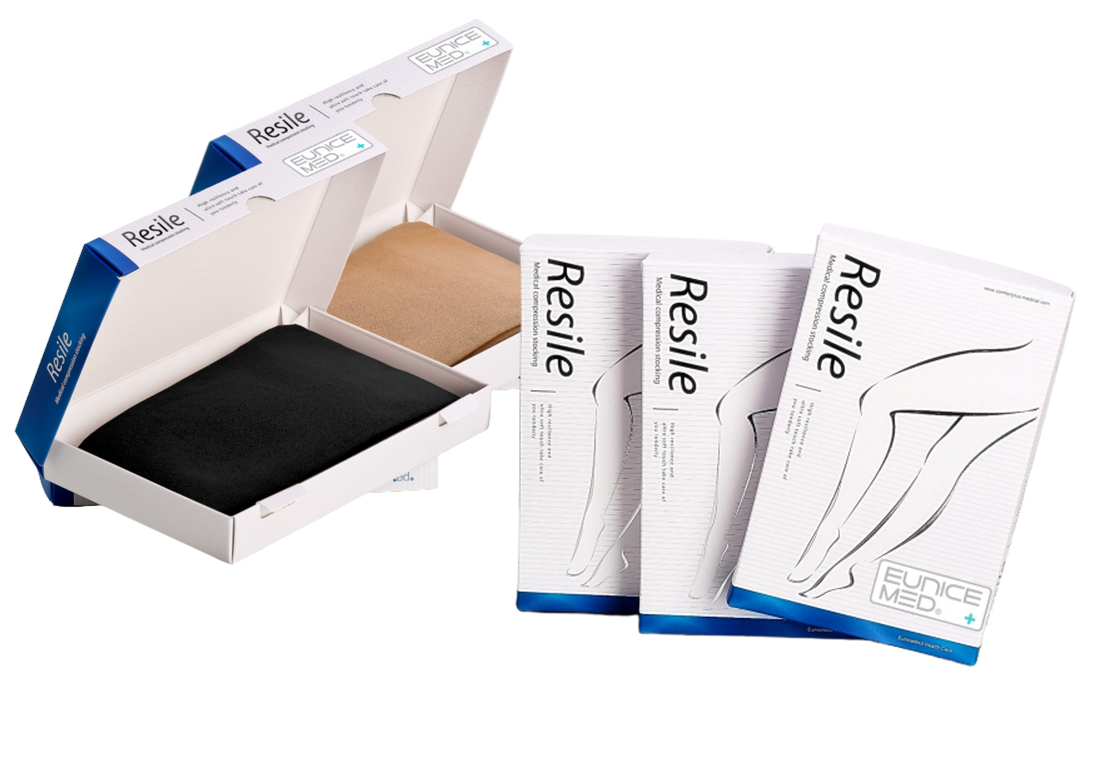
Understanding Medical-Grade Graduated Compression Stockings
Share
▴About "Medical-Grade Graduated Compression Socks"
Medical-grade compression stockings typically work by using elastic fabric. When worn, the elastic material applies pressure from the outside of the leg to promote venous blood return. The key technology behind medical grade graduated compression stockings lies in the use of specialized textile machinery. This technology, designed by medical engineers, allows for specific pressure characteristics to be applied to different areas of the stocking. This not only provides precise and appropriate pressure but also creates a gradually decreasing pressure gradient from the ankle to the thigh, effectively assisting blood flow from the leg veins back to the heart and preventing blood from accumulating in the lower extremities.

Image source: Graduated compression stockings - PMC (nih.gov)
▴Who are suitable for graduated compression stockings?
Leg muscles are nicknamed the body's second heart because they power venous blood flow through the lower extremities. Compression stockings are suitable for workers who stand for long periods of time, those who sit for long periods of time, long-haul travelers, pregnant women, those who have undergone varicose vein surgery, or those experiencing severe leg discomfort. However, because everyone's physical condition, leg condition, and desired compression requirements vary, please consult a physician before purchasing to ensure you choose the right compression and fit.
▴Is there a medical basis for the use of medical-grade compression stockings?
Note 1: Stasis Dermatitis: An Overview of Its Clinical Presentation, Pathogenesis, and Management - PMC (nih.gov)
Note 2: Is it necessary to wear compression stockings and how long should they be worn for preventing post thrombotic syndrome? A meta-analysis of randomized controlled trials - Thrombosis Research
▴How to read the pressure level?
Den ≠ mmHg
The correct unit of pressure level should be millimeters of mercury (mmHg)
The commonly heard term "Den" is actually a unit used in the textile industry to measure the thickness of yarn. It represents the density of a textile, which is the weight of the fiber material per fixed unit. A higher denier simply indicates a coarser yarn and more durable fabric, but it does not directly reflect the compression capacity of the product. Compression stockings manufactured using denier are not an internationally standardized indicator for evaluating the specifications of medical-grade compression stockings.
Millimeters of mercury are the true unit used to calculate the pressure caused by tightness; the two cannot be converted. Furthermore, using higher-strength, lighter, and more expensive elastic fibers might achieve the same pressure value at a lower denier, better balancing pressure and comfort.
▴Are tighter compression stockings more effective?Compression stockings aren't necessarily more effective the tighter they are. Wearing them too tightly can actually negatively impact blood circulation in the lower extremities, exacerbating leg discomfort. Instead, choose medical-grade compression stockings with a graduated design based on your preferred compression range for optimal comfort.
※ The best size is one where the leg circumference falls within the middle value. If the measurements fall within different size ranges, please choose your size based on the "cH hip circumference" for tights and the "cG thigh maximum circumference" for thigh socks.


▴How to wear compression stockings?
Before putting on compression stockings, ensure your feet are clean and dry. Be mindful of sharp nails, skin allergies, open wounds, and other conditions that could cause discomfort. When putting on the stockings, pull them up slowly and in sections, avoiding forcible pulling on the toe. Improper pulling can cause uneven pressure distribution throughout the stocking, leading to damage. Please refer to the diagram below for instructions:

▴Precautions for wearing compression stockings
Mild itching and fever while wearing are normal and can be alleviated by gradually increasing the wearing time. However, if you experience skin rashes, numbness, pallor, paresthesia, purple or darkening of the lower limbs, swelling, or inflammation after use, stop use immediately and seek medical attention as soon as possible.
▴FAQQ1: Which groups are not suitable for wearing compression stockings?
This product is not recommended for patients with dermatitis, gangrene, recent skin grafting, severe arteriosclerosis or other ischemic vascular diseases, extensive lower limb edema or pulmonary edema caused by congestive heart failure, or severe leg deformities. If use is necessary, consult a specialist before use.
Q2: How to avoid purchasing defective products?
Medical-grade compression stockings are medical devices. When purchasing, consumers should check for the "Medical Device License Number" issued by the Ministry of Health and Welfare. Purchase through pharmacies or licensed distributors to avoid unauthorized products. Pharmacies and licensed distributors also provide smooth communication channels, providing timely product information and customer service.

